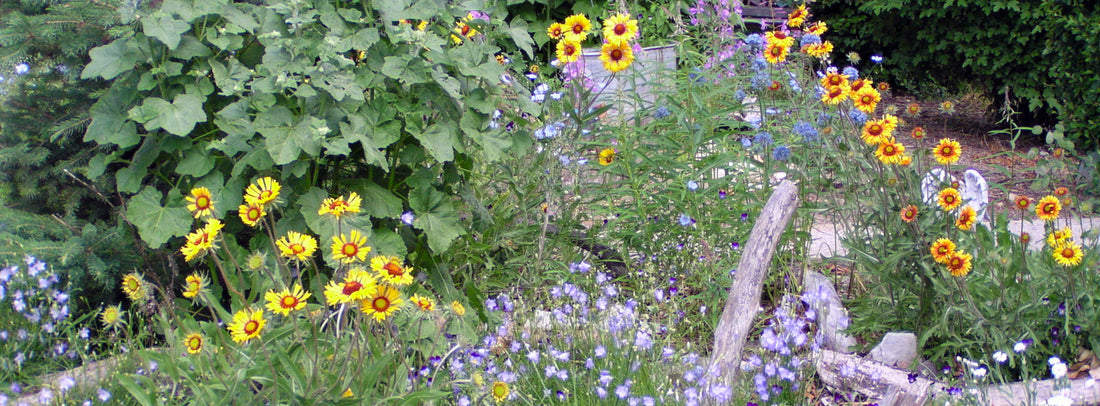
Non-Native Annual Wildflower Mixes vs Native Perennial Wildflower Mixes
Share
If you’re looking to establish a meadow or long-term wildflower planting, it’s important to understand the difference between non-native annual mixes and native perennial wildflowers.
The “wildflower mixes” you often find at grocery stores or big-box retailers are usually not native wildflowers. These mixes often contain species that aren’t native to your region—or even your continent. That’s not a crime—it just depends on what you’re after. But you don’t want to accidentally introduce problematic plants into your neighborhood, so it’s worth doing some homework to check what’s actually in the mix.
These annuals are often selected for quick germination and ease of growth, but they’re usually not frost-tolerant, which limits their flowering to the warmest part of the season. They’re also not adapted to local soils or pollinators, which means they don’t support native ecosystems in the same way.
The Nature of Annuals
An annual plant’s main mission in life is to make seed—so they produce a lot of flowers, and a lot of seeds. This can be lovely for the first few years, but eventually, they tend to choke each other out. The planting becomes dense and crowded, dominated by just one or two aggressive species, and the area eventually needs an overhaul.
Why Choose Native Perennials?
In contrast, native wildflowers are perennials. They may take longer to establish, but they’re adapted to your local climate, soil, and pollinators. They’re more resilient, sustainable, and well-suited to creating low-maintenance naturalized spaces. And while there are a few annual native wildflowers, the selection is very limited.
Why Native Perennials Take Time
Many native wildflowers have deep root systems and life cycles that don’t follow the fast-blooming pattern of annuals. In their first year, they often focus on root development, with flowering delayed until the second or third year. Some species, like Silvery Lupine or Wild Bergamot, can live for many years and gradually expand their presence over time.
Establishing native perennials is more like planting a self-sustaining ecosystem than decorating a flowerbed for instant color.
Looking for Quick Color?
If you want fast blooms while your native perennials get established, you can seed annuals as a temporary filler, either in separate zones or around the edges of your planting. Just avoid mixing them directly into your native seed blends—they’ll outcompete slower-germinating species and skew your results.
Also consider reading our article Establishing Native Wildflowers if you haven’t already—it’s full of tips for long-term success.
